 1965-1967
1965-1967
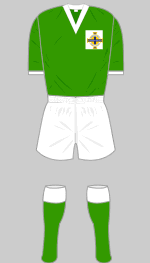
1961-1965
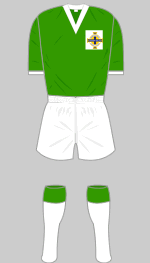
1961 v Greece

1961-1965 Change
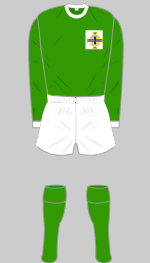
1965-1967
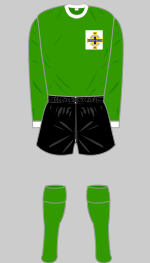
April 1965
v Netherlands
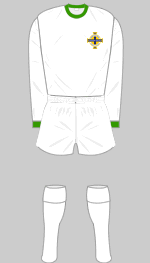
1965-1967
Designer: Bukta
Around 1965 modern crew neck shirts were introduced along with lightweight shorts and stockings and a white change kit made an occasional appearance.
 1967-1978
1967-1978
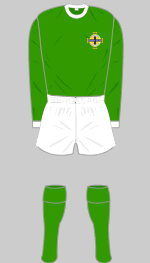
1967-1974

1969-1974 alternate
V Scotland

1967-1974 Change

1974
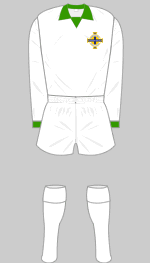
1974 Change
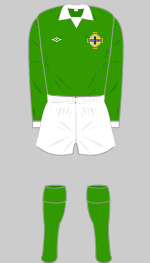
1975
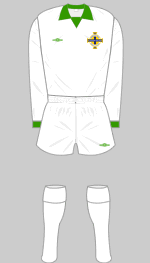
1975 Change
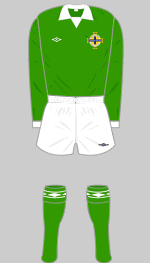
March-May 1976
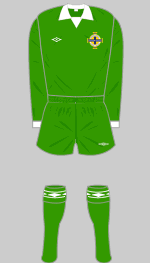
1976 Alternate
v Scotland
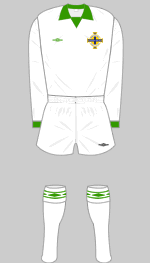
1976 Change
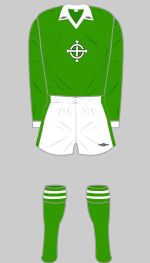
Oct 76-May 77
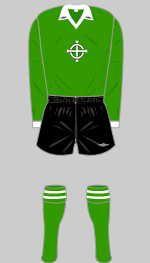
1977 Alternate
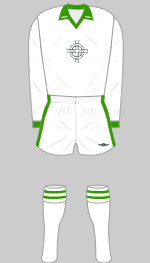
Oct 76-May 77 Change
Designer: Umbro
Throughout the 1970s, Umbro provided straightforward kits, which varied little from the basic design. After the switch from Bukta to Umbro in 1967 the crest was sewn directly onto the shirt rather than a large white panel. Fashionable collars appeared in 1974 and Umbro's trademark double diamond was applied to the shirts from 1976. White change kits were available but rarely, if ever, used. Umbro's final design, which appeared in 1976 was the most interesting design of the period. The IFA crest was replaced with a Celtic cross worn in the centre of the chest.
 1977-1980
1977-1980
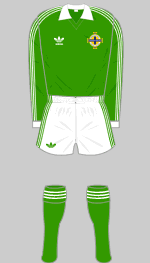
1977-1979
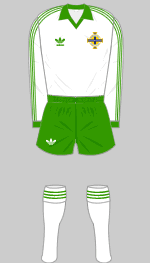
1977-1980 Change

Oct 1979-May 1980
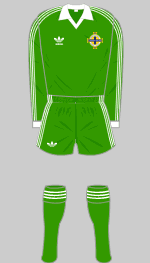
1979 v Scotland
Designer: Adidas
The Irish FA turned to the giant German company to provide their kits from September 1977. The designs were conservative, simply standard templates of the period in traditional green and white, although the addition of green shorts to the change kit provided a welcome contrast (and offered the flexibility of mixing and matching separate elements). The collars had green V necks until October 1979 when white versions appeared for the first time in the game against England. These were worn through to the conclusion of the British Championship in May 1980.
For the very first time the two Irish teams were brought together in the qualifying tournament for the 1980 European Championships. The first game in Dublin on 20 October 1978 ended in a 0-0 draw but Northern Ireland won the return at Windsor Park, Belfast 13 months later 1-0.



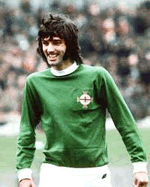 During the mid-1960s Belfast's most famous footballing son, George Best, regularly appeared in the green shirt but sadly, he never graced the final stages of either the World Cup or the European Championships, Northern Ireland failing to qualify.
During the mid-1960s Belfast's most famous footballing son, George Best, regularly appeared in the green shirt but sadly, he never graced the final stages of either the World Cup or the European Championships, Northern Ireland failing to qualify.




















